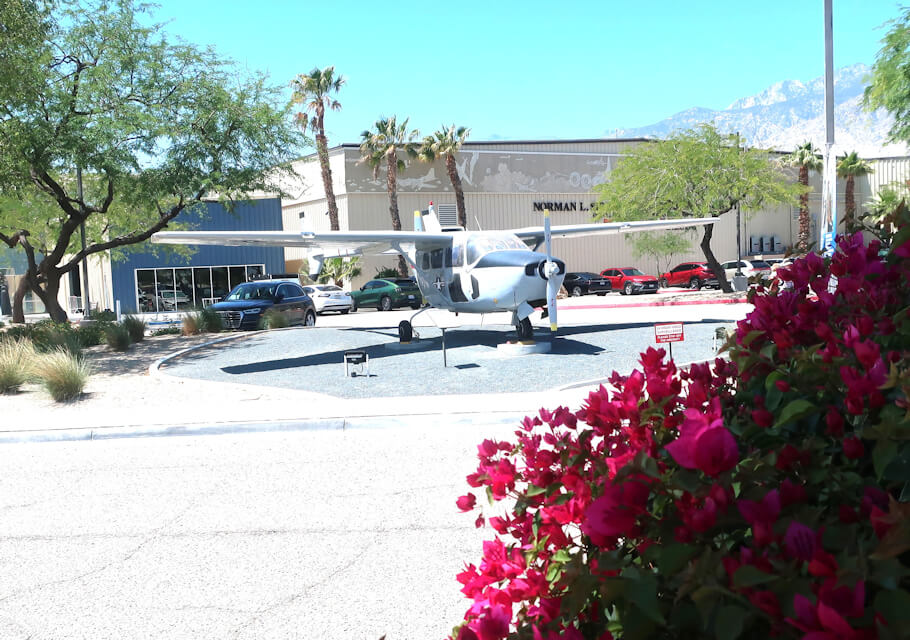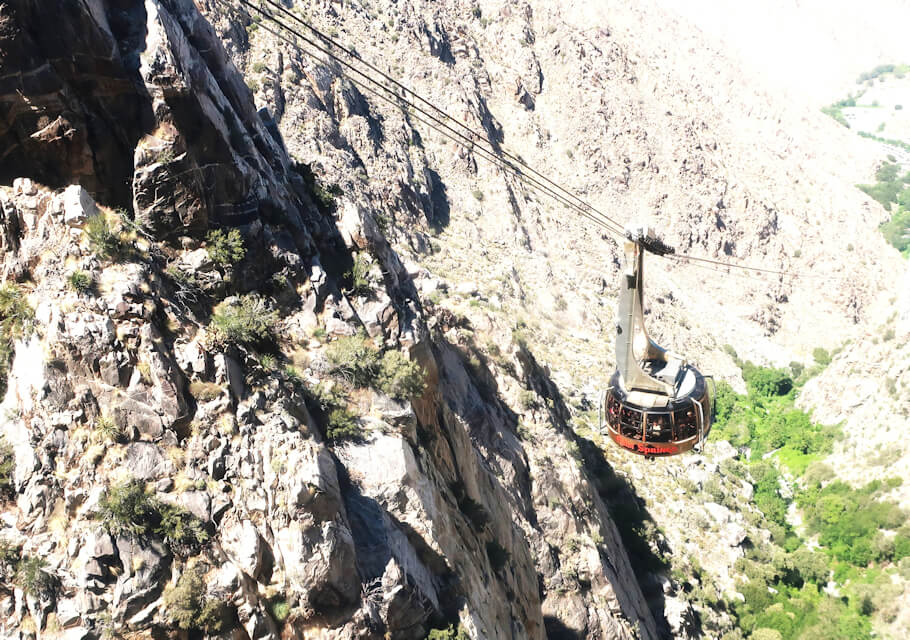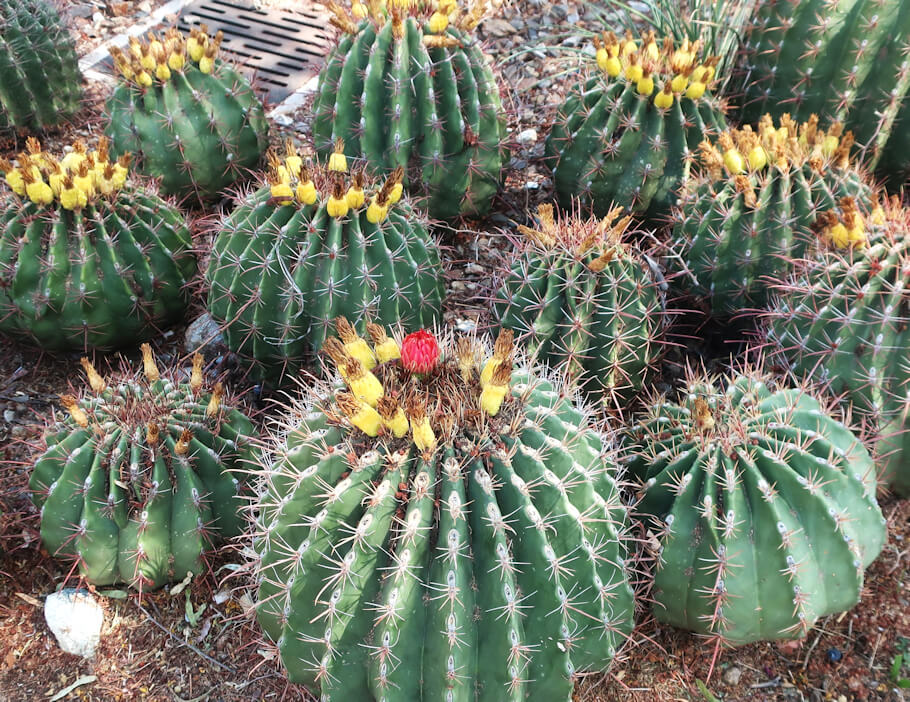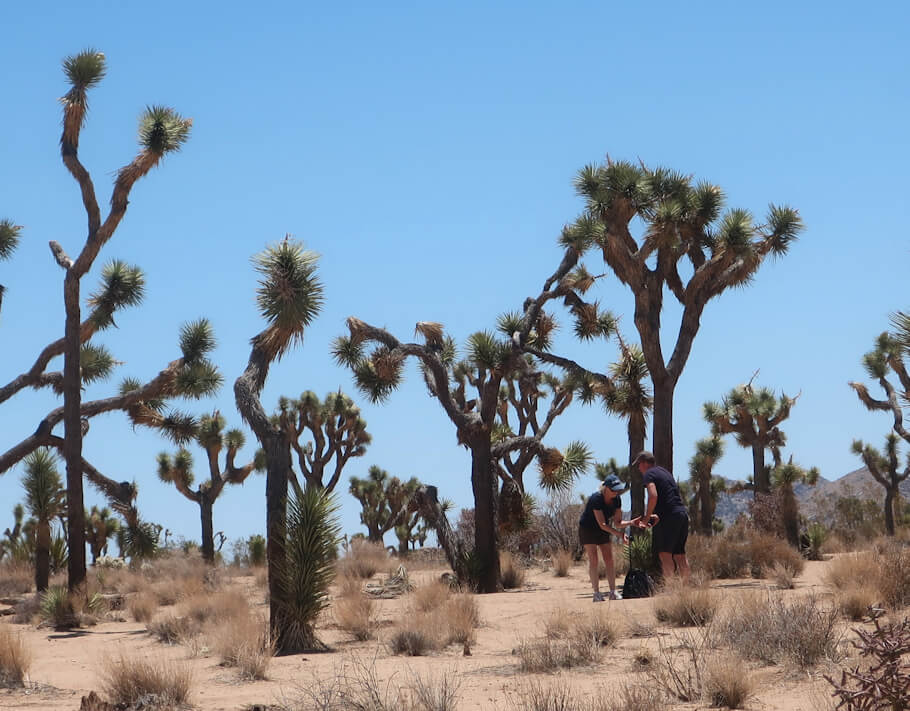Exploring Greater Palm Springs: Glamour, History & Accessibility
Author: Victor Block
Published: 2025/06/03 - Updated: 2025/06/05
Publication Type: Informative
Category Topic: Disability Travel America - Academic Publications
Page Content: Synopsis - Introduction - Main - Insights, Updates
Synopsis: This article provides a vivid historical and cultural overview of Greater Palm Springs, California, tracing its transformation from a desert oasis and stagecoach stop in the 1800s to a modern resort destination renowned for its ties to Hollywood, unique mid-century architecture, and vibrant arts scene. The narrative explores the area's enduring allure for celebrities, retirees, and visitors, highlighting its sunny climate, architectural heritage, and recreational opportunities.
The article also delves into the region's rich Native American legacy, particularly the Agua Caliente band of Cahuilla Indians, whose influence remains visible in local place names, museums, and preserved artifacts. Notable attractions such as the Palm Springs Air Museum, the Palm Springs Aerial Tramway, and the Living Desert Zoo & Gardens are described, with special attention to their accessibility features for people with disabilities, seniors, and families. The article is particularly helpful for travelers seeking destinations that combine cultural depth, natural beauty, and inclusive amenities, making it a valuable resource for a wide audience, including those with mobility or sensory needs - Disabled World (DW).
Introduction
In the mid-1800s, people traveling through a desert landscape which blanketed part of present-day California stopped at an oasis to rest, water their horses and refill their canteens. Not long afterward, a way station along a stage coach route was built there.
Fast forward to 1915, when the producer of a silent motion picture chose the place to film Peer Gynt, a fantasy story adapted from a drama written by the Norwegian playwright Henrik Ibsen. Soon the vacant valleys, boulder-strewn mountains and long stretches of sand attracted other movie makers and the Hollywood stars who acted for them.
Main Content
Today, the resort towns of Greater Palm Springs which occupy that area retain their close connection with motion picture luminaries, other celebrities and some - like me - who go to check out what makes the location so popular among those who visit or live there.
Located about 100 miles from Los Angeles, the site also is known for its dry, sunny climate. Add the collection of mid-20th century construction styles designed by famous architects, a strong arts and cultural scene, and long list of recreational activities and it's not hard to understand why Hollywood types, well-to-do business people, retirees and others seek out its attributes.
My first hint of the upscale allure of Greater Palm Springs, and the equally upscale lifestyle of many who live there, came in the roadside billboards I spotted as I got near to the destination. A number of them advertise facelift, breast enhancement and other cosmetic procedures intended to fight back against the natural results of the aging process. Reaching the end point of my drive, I began to notice an abundance of banks, investment companies, upscale shops and other businesses that would tempt people with plenty of money to spend.
I also took note of the prevailing architectural styles which share many attributes even as each structure lays claim to its own unique characteristics. Many homes are described as mid-century modern, harking back to the time when Hollywood types and others couldn't wait to lay claim to Greater Palm Springs as their second home site.
Among common features of this design are expansive windows, which help bring the outdoors into the houses; open floor plans, in keeping with the expansive natural surroundings, and neutral colors that fit well into those which Mother Nature has applied outside.
In addition to the homes that Hollywood types built, the movie star connection also becomes obvious in the names of a number of streets in the area. Frank Sinatra, Bob Hope, Jack Benny, Kirk Douglas and Dinah Shore are among those so honored and recalled.
Other thoroughfares evoke the Agua Caliente band of Cahuilla Indians who inhabited the region for thousands of years, and who remain an important presence. In fact, much of the territory is located within their reservation.
Indian Canyon, part of the ancestral home of local Native Americans, also serves as a reminder of their lasting influence. Among evidence of their long existence are rock art, irrigation ditches, food preparation areas and walking trails.
The Agua Caliente Cultural Museum recalls the time when the people for whom it is named lived close to the natural hot mineral-rich springs that proliferated there. Some resorts and spas continue to offer people the opportunity to experience their soothing, and some say curative, powers.
The museum is home to art, artifacts and other memorabilia which represent the tribe's history and culture. Among items in the Objects and Artifacts Collection are woven baskets, lovely pottery, textiles and other items. The Archives displays rare books, photographs, oral histories and audiovisual materials.
Before visiting the Palm Springs Air Museum, I wondered what a collection of both vintage and newer planes has to do with its desert location. Then I learned that years ago, a man in Minnesota who bought and restored World War II aircraft moved them to their present location. They're scattered around a 17-acre campus adjacent to an indoor display area. Another local tie-in is posters hanging outside which identify “Fallen Heroes,” residents of the region who lost their life in battle.

Before entering, I was greeted by a statue of the Tuskegee Airmen, a group of Black fighter and bomber pilots, and others, who belonged to a designated group before President Harry S. Truman issued an executive order ending segregation in the armed forces. Indoors, I took more time than I had anticipated enjoying exhibits which are much more impressive than I had expected.

A dramatic diorama realistically recreates the Japanese attack on Pearl Harbor. Flight simulators replicate airplane rides and demonstrations. Volunteer experts, many of them veterans, describe the displays and share their experiences.
A personal favorite was a collection of videos of Bob Hope performing for troops during World War II and beyond. Beginning in 1941 and continuing for nearly 50 years, Hope visited military camps and war zones, using comedy, song, dance and attractive female entertainers to bring a bit of joy into otherwise drab, and often dangerous, lives.
Speaking of taking to the air, another high point of my trip - both figuratively and literally - was a ride on the Palm Springs Aerial Tramway. That cable car has several claims to fame, beginning with the fact that it's the largest rotating sky tram in the world. As it transports passengers from the floor of Chino Canyon to the mountain station 8,516 feet above it, a 10-minute commute, the gondola gently turns. That provides breathtaking views of rugged cliffs, the valley floor, towering pine and fir trees that form a shaded forest environment, and San Jacinto Peak which looms overhead. In terms of biodiversity, the ride passes through five distinct climate zones, mimicking a journey from Mexico to Canada.

At the top, along with spectacular views, riders find the aptly named Peaks Restaurant, nature exhibits and hiking trails. The temperature can be 30 to 40 degrees cooler than the desert heat which prevails about 2.5 miles below.
A very different setting greeted me at the Living Desert Zoo and Gardens. While the wildlife there represents more than 150 species from around the world, I have seen many of them elsewhere. What attracted my greatest interest was the term “living desert” itself, with its implication that a barren locale with little precipitation can support much life. Boy, is that correct!

This botanical garden contains a tapestry of plants, many of them rare, which represent the diverse flora of arid regions throughout the globe. They include thorn forests which grow in East Africa, Joshua Trees from the Mojave Desert in California and Nevada, and other foliage that usually is at home in far-flung locales.

Because the Greater Palm Springs area is spread across the floor of canyons, it's not surprising that much of the land is flat and welcoming to people using a wheel chair or crutches. Many attractions, restaurants and shops provide accessibility and meet ADA requirements for guests.
The Living Desert Zoo & Gardens offers a variety of accessibility features. Those with sensory processing needs receive complimentary sensory bags that contain VIP badges, fidget tools, noise-canceling headphones and other helpful resources. Wide, paved pathways make it easy for guests using a wheelchairs or stroller to explore, and wheelchairs and electric scooters are available for rent.
The Palm Springs Aerial Tramway ascends two and a half miles up Mount San Jacinto in the world's largest rotating tramcar. The Valley Station, located at the bottom, the tram car, and the Mountain Station, located on the mountain, are fully wheelchair accessible and ADA compliant.
At the Palm Springs Air Museum, group tours with handicapped accessibility are available led by knowledgeable docents, many of whom are veterans and former pilots.
Among hiking trails at Indian Canyons are handicapped-accessible routes which feature inviting palm groves, picnic tables and a peaceful stream running through the trail.
Insights, Analysis, and Developments
Editorial Note: The enduring appeal of Greater Palm Springs lies not just in its glamorous past or sun-drenched vistas, but in its thoughtful embrace of history, diversity, and accessibility. This article reminds us that a destination's true value is measured by how welcoming and enriching it is for all who visit, regardless of age or ability. As travel evolves, Palm Springs stands as a model for blending luxury, heritage, and inclusivity in a way that continues to captivate and inspire - Disabled World (DW). Author Credentials: Victor Block has been a travel journalist for many years, and has written for major newspapers, magazines and travel websites and served as an editor of Fodor's Travel Guides. He is a member of the Society of American Travel Writers and the North American Travel Journalists Association. Victor is a regular contributor of reviews to the Disabled World travel section. Visit Victors's biography for further insights into his background and expertise.
Author Credentials: Victor Block has been a travel journalist for many years, and has written for major newspapers, magazines and travel websites and served as an editor of Fodor's Travel Guides. He is a member of the Society of American Travel Writers and the North American Travel Journalists Association. Victor is a regular contributor of reviews to the Disabled World travel section. Visit Victors's biography for further insights into his background and expertise.